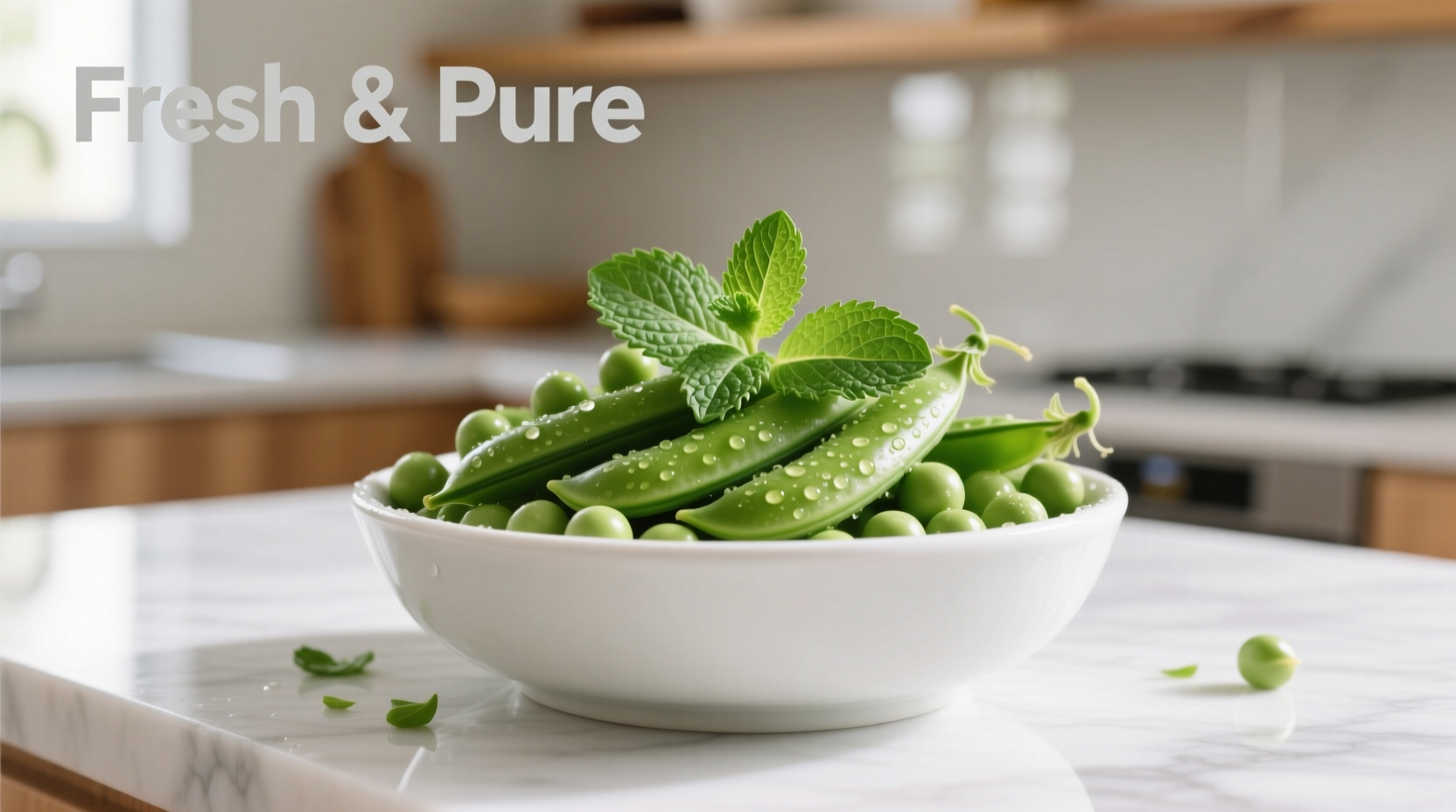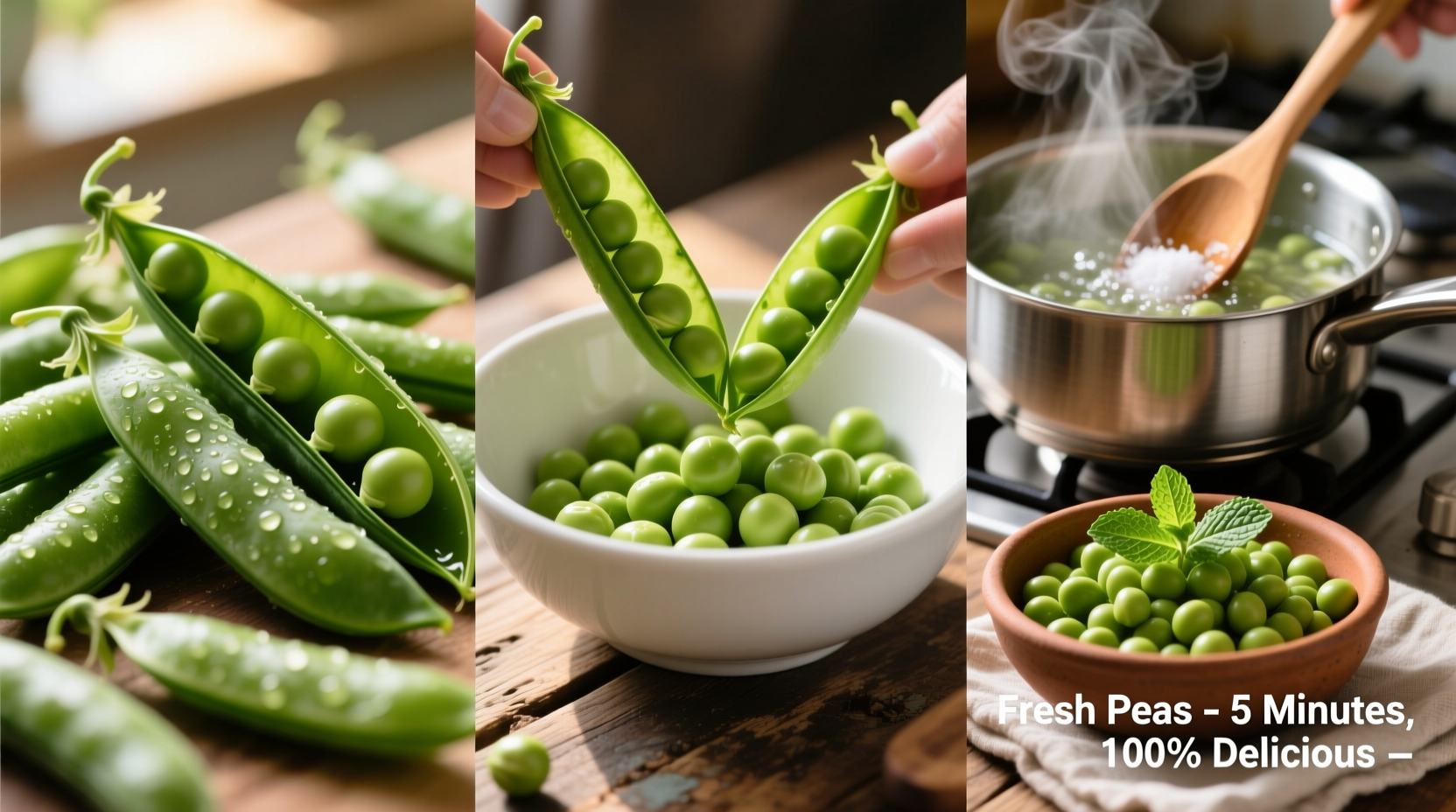Perfectly cooked fresh peas should be tender-crisp with vibrant color and sweet flavor. This guide reveals exactly how long to cook fresh peas (2-4 minutes for boiling, 3-5 minutes for steaming), the best preparation techniques, and simple flavor enhancements that make all the difference.
There's nothing quite like the sweet, delicate flavor of freshly picked peas. Unlike their frozen counterparts, fresh peas require minimal cooking to preserve their natural sweetness and vibrant green color. Whether you're harvesting from your garden or selecting them at the farmers' market, proper preparation and precise timing transform these humble legumes into a standout side dish.
Selecting the Best Fresh Peas
Quality starts at selection. Look for pods that are bright green, firm, and rounded. When gently squeezed, they should feel full and plump. Avoid pods that appear dull, yellowed, or feel flat or shriveled. The fresher the peas, the sweeter their flavor will be.
Peas begin converting sugars to starch immediately after harvest. For optimal sweetness, use peas within 24 hours of picking. If purchasing from a market, ask when they were harvested—early morning harvests typically offer the best quality.
Preparing Fresh Peas for Cooking
Start by removing peas from their pods. Simply snap off the stem end and pull the string down the side of the pod. The pod should open easily, allowing you to push the peas out with your thumb. Discard the pods (though they can be used in stocks).
After shelling, rinse peas in cool water to remove any debris. For uniform cooking, sort through peas to remove any discolored or damaged ones. Unlike dried peas, fresh peas don't require soaking before cooking.
| Cooking Method | Time | Water Ratio | Resulting Texture |
|---|---|---|---|
| Boiling | 2-4 minutes | 4 cups water per 1 cup peas | Tender-crisp |
| Steaming | 3-5 minutes | N/A | Firm yet tender |
| Sautéing | 5-7 minutes | 1-2 tbsp butter/oil | Rich, caramelized edges |
Three Perfect Cooking Methods
Boiling Fresh Peas
Boiling remains the simplest method for cooking fresh peas. Bring a large pot of salted water to a rolling boil (use 1 tablespoon salt per 4 cups water). Add peas and cook for 2-4 minutes—no longer. Overcooking turns peas mushy and dulls their vibrant color.
The USDA recommends cooking times of 2-4 minutes for optimal nutrient retention in fresh vegetables. Immediately transfer boiled peas to an ice water bath to stop the cooking process and preserve their bright green color.
Steaming Fresh Peas
Steaming preserves more nutrients than boiling. Place peas in a steamer basket over 1 inch of simmering water. Cover and steam for 3-5 minutes until tender-crisp. This method prevents water-soluble nutrients from leaching into cooking water.
According to research from the University of California Cooperative Extension, steaming maintains higher levels of vitamin C and other water-soluble nutrients compared to boiling. The gentle heat preserves the peas' natural sweetness without water dilution.
Sautéing Fresh Peas
For richer flavor, try sautéing. Heat 1-2 tablespoons of butter or olive oil in a skillet over medium heat. Add peas and cook for 5-7 minutes, stirring occasionally. This method creates delicious caramelized edges while maintaining texture.
Professional chefs often finish sautéed peas with a splash of fresh lemon juice or a pat of butter to enhance their natural sweetness. The Maillard reaction during sautéing develops complex flavor compounds that boiling cannot achieve.

Flavor Enhancements That Make a Difference
While fresh peas shine with minimal seasoning, these professional touches elevate them:
- Salt timing: Add salt at the beginning of cooking to help maintain vibrant color
- Acidity balance: Finish with a squeeze of lemon juice to brighten flavors
- Fat pairing: Toss with butter, olive oil, or cream for richer mouthfeel
- Aromatic additions: Sauté with shallots, garlic, or fresh herbs like mint or parsley
Avoid adding baking soda to cooking water—a common but misguided practice that destroys vitamin C and creates an unpleasant soapy flavor.
Serving and Storage Tips
For best results, serve peas immediately after cooking. Their sugars continue converting to starch as they cool, diminishing sweetness. If you must prepare ahead, undercook slightly and finish heating just before serving.
Store cooked peas in an airtight container in the refrigerator for up to 3 days. For longer storage, blanch peas for 1 minute, then freeze in a single layer before transferring to freezer bags. Properly frozen peas maintain quality for 6-8 months.
Common Mistakes to Avoid
Even experienced cooks make these errors when preparing fresh peas:
- Overcooking: Peas become mushy and lose vibrant color in just 30 seconds past ideal time
- Crowding the pot: Too many peas in limited water lowers temperature and creates uneven cooking
- Skipping the ice bath: Residual heat continues cooking peas after removal from heat
- Adding salt too late: Salt at the beginning helps maintain pea structure and color
Remember that fresh peas contain natural sugars that caramelize quickly. When sautéing, maintain medium heat to prevent burning while developing flavor.
Understanding Pea Varieties
While English peas are most common, other varieties offer unique characteristics:
- Snow peas: Flat pods eaten whole, best cooked 1-2 minutes
- Sugar snap peas: Round edible pods, cook 2-3 minutes
- Field peas: Often dried, require longer cooking times
Each variety has different optimal cooking times based on pod structure and sugar content. Adjust your technique accordingly for best results with each type.











 浙公网安备
33010002000092号
浙公网安备
33010002000092号 浙B2-20120091-4
浙B2-20120091-4